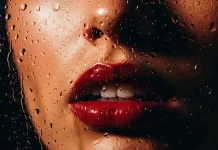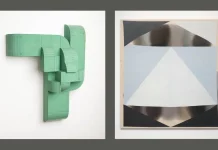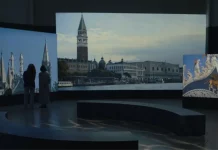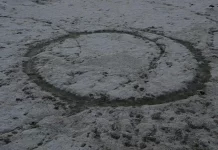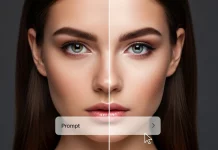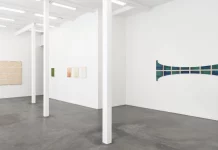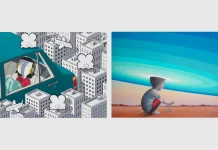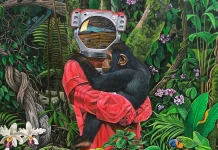From April 30 – July 30, 2023, The Collezione Maramotti presents Ivor Prickett’s documentary photography exhibition, No Home from War: Tales of Survival and Loss.
Collezione Maramotti is hosting an exhibition titled “No Home from War: Tales of Survival and Loss,” which showcases the works of photojournalist Ivor Prickett. The exhibition coincides with the 2023 Fotografia Europea festival, which is themed “Europe Matters: Visions of a Restless Identity,” and marks Prickett’s first exhibition in Italy.
Prickett’s largest show to date is called “No Home from War,” featuring over fifty photographs taken in conflict zones between 2006 and 2022. The following images are part of the exhibition. Please read more below.

2006, Jurga, Croatia
Photography from the series “Returning Home – Croatia”
Courtesy and © Ivor Prickett

2015, Lesbos, Greece
Photography from the series “Seeking Shelter. Part II – West”
Courtesy and © Ivor Prickett

2014, Beqaa, Lebanon
Photography from the series “Seeking Shelter. Part I – East”
Courtesy and © Ivor Prickett

2016, Mosul, Iraq
Photography from the series “End of the Caliphate”
Courtesy and © Ivor Prickett

2018, Raqqa, Syria
Photography from the series “End of the Caliphate”
Courtesy and © Ivor Prickett

2022, Velyka Dymerka, Ukraine
Photography from the series “Fighting to Exist”
Courtesy and © Ivor Prickett
Prickett studied Documentary Photography at the University of Wales, Newport, and then worked in Europe and the Middle East. He aimed to show how war affects civilians, regardless of which side they are on. At first, Prickett focused on the long-term social and humanitarian consequences of war on the private and domestic spheres. However, over the years, his focus shifted to places where people are forced to migrate or seek refuge, as well as the front lines of combat zones. The concept of home, which represents a physical location and an important emotional space related to security, self-awareness, and belonging, is a recurring theme in his writing.
The exhibition showcases Prickett’s work in chronological order, highlighting his career so far. Starting from 2006 to 2010, his focus in the Balkans and the Caucasus was on individuals and small family groups, regarded as units of resistance that represent the fight for survival.
The Serbian minority in Croatia was displaced by the war in the ’90s. The photos of this displacement depict individuals struggling to rebuild their lives in precarious situations without a sense of home, family, or community. The same sense of loneliness is also evident in portraits of the Georgian Mingrelian population in Abkhazia. These people are grappling with their history and struggling to find a stable footing in a fragile environment.
Prickett created a body of work between 2013 and 2015 that depicts the humanitarian crisis caused by the war in Syria. This crisis resulted in millions of refugees in the Middle East and migrants in Europe. In this work, Prickett shifted his focus from private life to the world outside. He captures the period when people were compelled to move and fill refugee camps, or undertake perilous journeys into unknown territories.
Prickett has documented the war against ISIS in Iraq and Syria from 2016 to 2018. Despite being embedded with Iraqi forces on the front lines, he managed to eliminate spatial and temporal distance from the conflict scene and took photos. The images show a decimated landscape of rubble and destruction, where everything seems pulverized, or covered in dust from recent explosions. However, amidst this devastation, delicate scraps of ordinary humanity emerge.
In 2022, when the war broke out in Ukraine, Prickett was drawn to the ruined buildings and empty spaces left by bombings. These destroyed structures revealed the devastating impact of the war on personal and domestic spaces and gave insight into the larger horrors of the conflict in Europe. In the photographs, we can see Ukrainian soldiers silhouetted in darkness, their profiles illuminated only by their own flashlights. Once again, civilians are experiencing pain and uncertainty together and are unable to believe that they are faced with the same horror again.
Pr uses framing and composition to create iconic images that reflect classic religious and art historical motifs. He doesn’t alter the available light, allowing the figures, settings, and details to naturally emerge. The images channel the symbolic and aesthetic power of nameless saints, the Pietà, bucolic scenes, voyages to the Island of the Dead, Caravaggio, and Rembrandt, offering a reflection on our era. The photographs seem to be staged, but we know that the subjects are authentic, creating a contrast that transforms them into meaningful symbols and prompts us to make a decision.
The upcoming exhibition will have a book published alongside it. This book will include an essay written by Arianna Di Genova, who is an art critic, journalist, and editor at il manifesto.
All images © by Ivor Prickett. Do not hesitate to browse through the Photography section on WE AND THE COLOR for more.
Subscribe to our newsletter!



